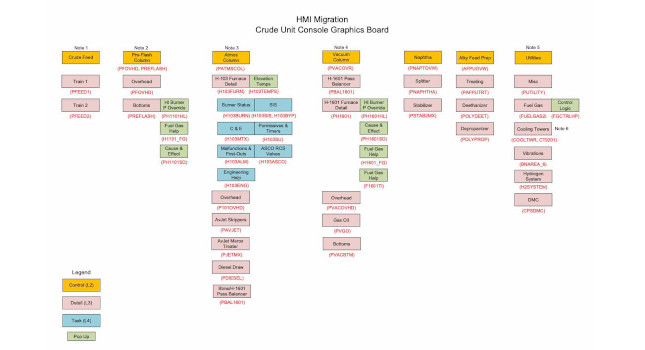Rather than dwelling on the rising unemployment figures, the focus for the future shouuld be on how to attract young people to manufacturing and how to connect manufacturers with the business, civic and educational leaders who can drive the grass-roots effort needed to address the issue. The perception of manufacturing careers being unstable and in undesirable work environments is a perception that must change.
It is impossible to believe we’re talking about job shortages in manufacturing after watching 793,000 manufacturing jobs disappear in 2008. Yet everyone seems to be talking about the looming Skills Gap in American manufacturing, and that discussion is gaining momentum.
Two separate town hall meetings at trade events in January focused on how to attract young people to manufacturing, and how to connect manufacturers with the business, civic and educational leaders who can drive the grass-roots effort needed to address the issue.
A few of those grass roots efforts are already in place:
-
The National Association of Manufacturers ’ Dream It Do It campaign has expanded from the Kansas City project Plant Engineering profiled in July 2005 to 15 locations
-
Dean Kaman, inventor of the Segway vehicle, has spearheaded the national FIRST Robotics campaign that puts engineering skills in the hands of junior high and high school students to invent machines to perform specific tasks
-
YAPFEST was held in Houston in October as part of ISA ’s annual conference. The meeting of young automation professionals under 30 focused on creating a sense of community and opportunity for young people interested in manufacturing automation.
-
There are pockets of success around the country where the community and the manufacturing leaders have embraced the manufacturing jobs of the future as skilled work requiring young people to have computer and analytical skills. Yet the perception of manufacturing jobs continues to be an unstable career in an undesirable work environment.
Changing the approach
Accepting the Skills Gap as a reality for manufacturers isn’t hard. Selling that message to a wary public — especially to students and parents — is more daunting. Yet the message, everyone agreed, needs to start being carried out there.
“Even though there’s an economic downturn, the graying workforce isn’t going away,” said Rob Glasier, head of U.S. operations for AVEVA. “We need to be aggressive with educational institutions to help us put together the programs we need. What we do ourselves is that we’ve gone back to an apprenticeship program. We find some really sharp people and put them on an aggressive growth path. In three to four years, we tell them they’ll be a world-class expert, and we will pay them accordingly. And we do deliver.”
The keynote presentation at the ProMat conference in Chicago in January focused on building the workforce of the future. Panelists agreed the approach to attracting young people to manufacturing needed to change, just as manufacturing has changed.
“The manufacturing jobs of old aren’t out there any more,” said Josh Dennie, production control managers at Optimax Systems, Rochester, NY. “They want to feel like they belong to something. At Optimax, we get every person in the organization involved from the ownership perspective.”
“These are not the Boomers,” added Sharon Carrell, head of sales and operations development programs for McKesson Corp. “The career growth is there, and they want to continue learning. You need to make sure you’re in tune with them.”
Partnerships and relationships
Everyone involved in a grass-roots program agrees it’s the relationship between manufacturing and education that is the linchpin in building a successful manufacturing workforce. In particular, the community colleges have emerged as the key to developing training programs focused on the manufacturing community needs.
Grainger has focused on the need to connect training programs with the community college student. Its Tools for Trades program offers scholarships to community college students, and provides graduates with a full tool kit upon graduation. At Grainer’s Total MRO event in Orlando in January, Mike Pulick, head of U.S. operations for the company, announced the company would expand both the number of community colleges and the number of scholarships, offering 100 scholarships in 2009.
Pulick is also active in the Junior Achievement program in Lake County, IL, where Grainger is headquartered. “We want to start investing in these kids when they are juniors and seniors in high school,” Pulick said.
Grainger has also taken the issue one step further, partnering with Mike Rowe, host of the Discovery Channel show Dirty Jobs to help develop a grass-roots awareness of the need for more trade and manufacturing jobs. Rowe also spoke about the issue at the Grainger event, noting that the discussion inside of manufacturing is louder than in the country as a whole.
“Everybody knows the drill. We’re preaching to the choir over and over again,” Rowe told attendees at a town hall meeting on the Skills Gap at the Grainger event. “What I realized with Dirty Jobs is that now I’m stopped on the street by people with Ivy League degrees, and that the show is hitting a chord with a demographic we never expected.
“We’re taking out a message that we’ve done a really stupid thing,” Rowe added. “There’s been a Cold War on work in America. There’s been a pervasive marginalizing of jobs. We no longer have icons of hard work. We have American Idols.”
A path from gray to green
Industry experts agree there are three essential steps to plugging the Skills Gap and addressing the skilled worker shortage:
• Engage the students — In five years, when the Skills Gap is expected to hit the hardest, the new employee you’re looking for is now a high school senior. That worker is an iPod-wearing, Wii-playing, Facebook-connected person. Reaching this new generation of worker with a compelling message is important. One of those messages is that a four-year college degree doesn’t always translate into big bucks. “The opportunity for skilled labor moving forward is huge,” Pulick said. “In many cases, the high school student talking about a career in the trades has a higher earning potential than someone with a four-year degree.”
• Engage the community — Something as simple as an open house and picnic, a Chamber of Commerce meeting at the plant or field trips for students and parents can show the reality of manufacturing and break down the negative perceptions about the work and the workers. There needs to be a partnership with civic and political leaders that stresses the economic value of job creation and retention on a local basis.
• Engage the educators — Partnerships with the community college system provides an outstanding opportunity to develop workforce training programs specifically tailored to a company’s training needs, both prior to employment and as continuing education. The idea of a worker building a career and working on a career path is important to build a sense of stability for the workers.
Glasier said AVEVA is looking at a “gray-to-green” approach to the issue, both for their clients in the oil and gas industry and for their own organization. “I can make a system intuitive to use, but it requires more expertise to operate.”
There are other issues that can be addressed. One is finding ways to retrain workers displaced in the manufacturing downturn. Another is expanding that training to include veterans, who have more technical skills but are currently unemployed at a rate much higher than the national average. And as Glasier noted, the issue of a Skills Gap is not unique to the United States. “China and India have shortages of highly-skilled workers as well,” he said. “You may have a lot of unemployed people, but they are not necessarily skilled people.”
The Skills Gap issue has been overshadowed by the bad news in 2008, especially for manufacturers. Experts are optimistic that the Obama Administrations’ economic stimulus package will create construction and infrastructure jobs, which will trickle down to manufacturing jobs, which will help jump-start the economy. When that happens, Glasier said, the Skills Gap will be even more apparent.
“Our planning for 2009 was based on everything being stable, with not much growth,” he said. “If not this fiscal year, we do see things turning back around. So what do we do when we get back to growth? The aging workforce issue isn’t going to go away.”
The Skills Gap: Solutions
The study recommended a series of steps to address the issue, including:
A greater educational emphasis on science, math and technology-related programs
Employer investment in training for current employees
Government investment in community colleges and technical education
Career education as a measurable criteria for K-12 success
Manufacturers doing a better job of communicating skill needs and employee requirements to educational and civic leaders
Increased public/private partnerships to support career awareness campaigns.
The full Skills Gap report is available for download at
Manufacturing Summit to focus on the Skills Gap
The
For the third consecutive year, Plant Engineering readers identified the lack of skilled workers as the single greatest issue they face in manufacturing today in the
Even with the economic issues at the end of 2008, 31% of readers said the lack of skilled workers was their most pressing issue, while 15% cited downsizing, 11% mentioned the economy and just 6% cited global competition.
A look at the Salary Survey in detail is available at
Resource Guide: How to get started
Here are a few of the organizations and programs that have launched successful efforts to address the Skills Gap in manufacturing:
Dream It Do It:
Junior Achievement:
Skills USA:
FIRST Robotics:
YAPFEST:
Mike Rowe Works:
Most experts suggest starting at a local level, working with high schools and community colleges to raise awareness about the availability of skilled jobs in manufacturing, and developing training programs to assist young people headed into the workforce, retraining for those manufacturing workers displaced by the recession and continuing training for existing employees.



